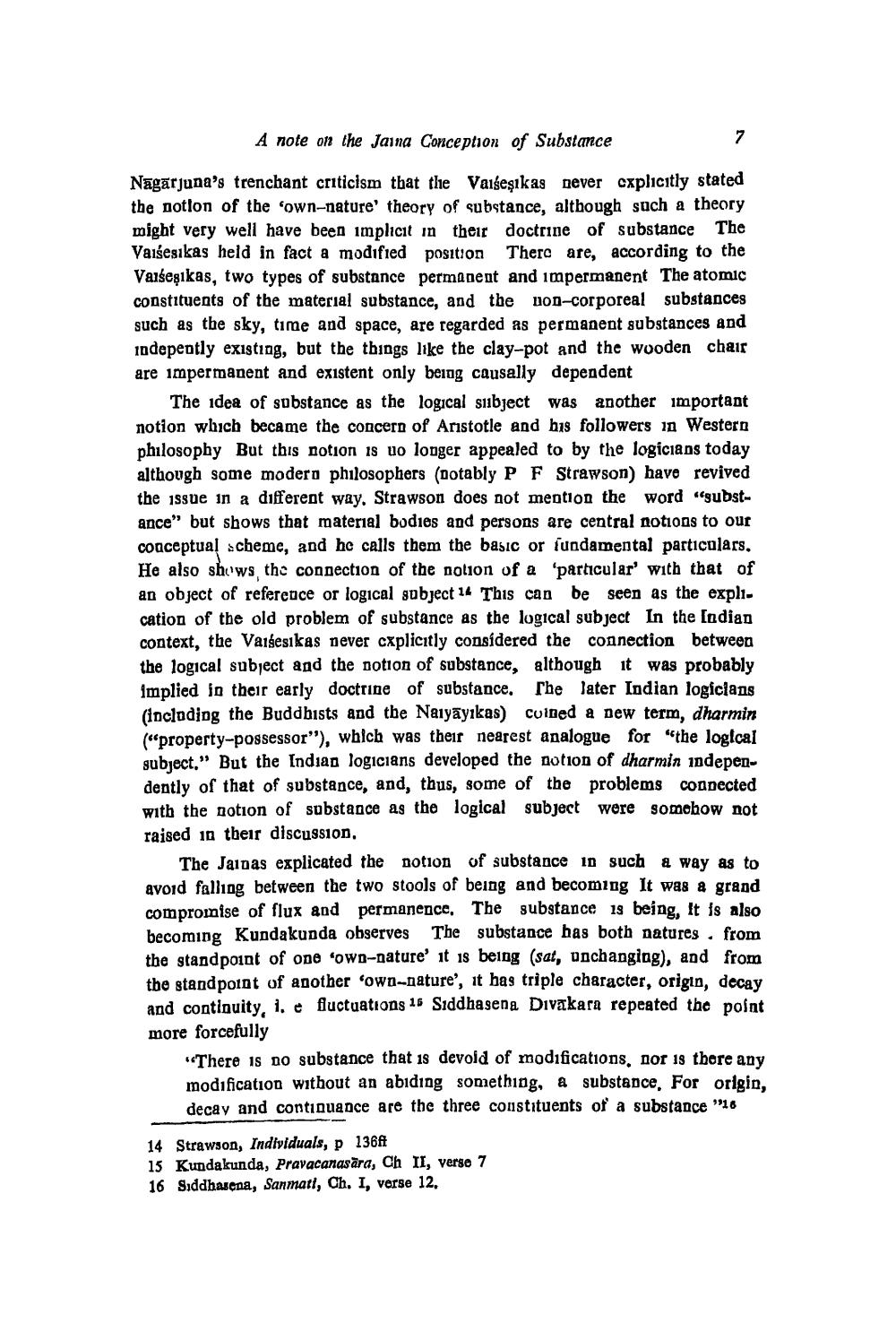________________
A note on the Jaina Conception of Substance
Nagarjuna's trenchant criticism that the Vaišeşikas never explicitly stated the notion of the 'own-nature' theory of substance, although such a theory might very well have been implicit in their doctrine of substance The Vaišesikas held in fact a modified position There are, according to the Vaišeşikas, two types of substance permanent and impermanent The atomic constituents of the material substance, and the non-corporeal substances such as the sky, time and space, are regarded as permanent substances and indepently existing, but the things like the clay-pot and the wooden chair are impermanent and existent only being causally dependent
The idea of substance as the logical subject was another important notion which became the concern of Aristotle and his followers in Western philosophy But this notion is uo longer appealed to by the logicians today although some modern philosophers (notably P F Strawson) have revived the issue in a different way. Strawson does not mention the word "ubstance" but shows that material bodies and persons are central notions to our coaceptual scheme, and he calls them the basic or fundamental particulars. He also shows the connection of the nolion of a 'particular with that of an object of reference or logical subject 16 This can be seen as the explication of the old problem of substance as the logical subject In the Indian context, the Vaisesikas never explicitly considered the connection between the logical subject and the notion of substance, although it was probably implied in their early doctrine of substance. She later Indian logicians (including the Buddbists and the Nalyāyikas) cuined a new term, dharmin ("property-possessor"), which was their nearest analogue for "the logical gubject." But the Indian logicians developed the notion of dharmin independently of that of substance, and, thus, some of the problems connected with the notion of substance as the logical subject were somehow not raised in their discussion,
The Jaidas explicated the notion of substance in such a way as to avoid falling between the two stools of being and becoming It was a grand compromise of flux and permanence. The substance is being, It is also becoming Kundakunda observes the substance has both natures from the standpoint of one ‘own-nature' it is being (sat, unchanging), and from the standpoint of another 'owo-nature', it has triple character, origin, decay and continuity, 1. e fluctuations 16 Siddhagena Divakara repeated the point more forcefully
"There is no substance that is devoid of modifications, nor is there any modification without an abiding something, a substance, For origin, decay and continuance are the three constituents of a substance "16
14 Strawson, Individuals, p 136A 15 Kundakunda, Pravacanasāra, Ch II, verge 7 16 Siddhasena, Sanmatt, Ch. I, verse 12,




